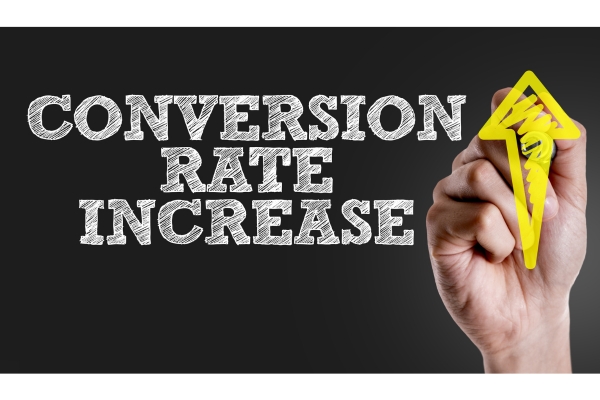5 Directory Platform Metrics You Need to Track Now

If you’re a local business owner, chances are you’re listed on a few online directories already—and whether you’re tracking them or not, you’re already generating directory platform metrics. That’s a great start—but being listed alone isn’t enough. To get real value, you need to understand how your listings are performing.
Don’t worry, we’ll keep this simple and beginner-friendly. Before we dive into the metrics, let’s take a moment to understand why tracking them matters—especially if you’re just starting out.
Why Tracking Directory Metrics Matters

Simply listing your business isn’t enough these days. With dozens of directories competing for attention, tracking the right metrics helps you:
- Know what’s working (and what’s not).
- Make small updates that lead to better visibility.
- Save time by focusing on what actually brings traffic and leads.
Whether you’re managing one listing or ten, tracking helps you stay in control and avoid wasting effort on guesswork.
Let’s get started.
1. Views & Impressions
Think of views and impressions like foot traffic past a store window. Impressions are how many times your listing shows up in search results, while views often mean someone actually looked at your profile. The more exposure you get, the better your chances of turning a casual browser into a paying customer.
Why Track It?
- Indicates how effectively your business is showing up in search results.
- Helps you see if your keywords and descriptions are working.
How to Improve It:
- Update your listing regularly with fresh content or images.
- Optimize your listing with relevant keywords.
Check your directory stats monthly, noting spikes or drops in impressions, then adjust your keywords as needed.
2. Click-Through Rate (CTR)
CTR is how often people who see your listing actually click it. It’s like someone stopping to take a closer look in your storefront rather than just passing by. A low CTR means people are seeing your listing but not finding it compelling enough to click—so it’s a key metric for spotting missed opportunities.
Why Track It?
- Helps identify how compelling your listing title, images, and snippets are.
- Indicates whether your listing is relevant to what users are searching for.
How to Improve It:
- Write clear, engaging titles and meta descriptions.
- Use high-quality images that catch attention.
Experiment with different headlines or images each month and track the impact on CTR.
3. Conversion Rate

This is arguably your most important metric because it reflects real engagement. Conversion rate tells you how often someone moves from just viewing your listing to taking meaningful action—like clicking your website, calling, or asking for directions. If impressions and clicks are the first steps, conversions are the real wins.
Why Track It?
- Reveals if your listing effectively motivates customers to interact with you.
- Directly ties to actual sales or client bookings.
How to Improve It:
- Include clear, inviting calls-to-action (CTAs), such as “Book Now” or “Get Directions.”
- Ensure all your contact information is accurate and easy to find.
Monitor conversion rates monthly. If conversions are low, adjust your CTAs or contact details for better clarity and ease.
4. Reviews & Ratings
Online reviews are your digital word-of-mouth. Whether good or bad, they influence how potential customers perceive your business before ever interacting with you. High ratings and consistent feedback not only build trust but can improve your visibility across platforms.
Why Track It?
- High ratings improve visibility and customer trust.
- Provides feedback to help improve your services.
How to Improve It:
- Proactively request reviews from satisfied customers.
- Respond promptly and professionally to negative reviews to show you care.
Check weekly for new reviews, respond authentically, and address any recurring customer issues promptly.
5. Listing Accuracy & Completeness
Imagine someone finding your business online, only to discover the phone number is wrong or the hours are outdated—that’s a fast way to lose a customer. Accurate and complete listings reduce friction, build trust, and help search engines rank you higher because your information stays consistent across the web.
Why Track It?
- Ensures customers can easily reach you.
- Accurate listings boost your search ranking and credibility.
How to Improve It:
- Regularly verify your business details on each platform.
- Include comprehensive information (hours, services, images, FAQs).
Schedule a monthly reminder to review and update your listings.
Common Mistakes to Avoid When Tracking Directory Metrics
Even with the best intentions, it’s easy to fall into these traps:
1. Only checking metrics once in a while.
If you’re not consistently reviewing your data, it’s hard to know what’s working. Make tracking a monthly habit.
2. Focusing on the wrong numbers.
Views are nice, but conversions and click-throughs tell you if people are actually interested. Don’t get distracted by vanity metrics.
3. Ignoring reviews and ratings.
A great listing with bad or no reviews still struggles to convert. Make collecting and responding to feedback part of your workflow.
4. Having inconsistent or outdated info across directories.
Mismatched phone numbers or business hours can turn customers away and hurt your SEO.
If you haven’t properly claimed your business listings, you might not even be able to fix these errors—leading to missed opportunities.
5. Tracking metrics but not acting on them.
Numbers don’t mean much unless you use them to guide improvements. Adjust titles, images, or CTAs based on what your data shows.

Turn Directory Metrics into Real Results
Tracking these five directory platform metrics helps you stay visible, relevant, and competitive in your local market. With just a bit of monthly maintenance, you’ll build more trust, earn more clicks, and make your listings work harder for your business.
The best part? You don’t need to master complex tools or hire an agency to see results. Small, consistent improvements—like updating your photos, tweaking your descriptions, or responding to reviews—can make a big difference over time.
So don’t overthink it. Treat your directory listings like living assets that need a little attention to keep performing. Stay proactive, keep an eye on your metrics, and let the data guide your next smart move.
Frequently Asked Questions

Track views, click-through rates, conversions, reviews, and listing accuracy. Regularly checking these helps measure your success.
Listings often get ignored if they’re unclear or uninteresting. Improve titles, descriptions, or images to attract more clicks.
Update your directory listings monthly to maintain accuracy. Keeping information fresh ensures customers can easily reach you.
Reviews significantly affect trust and visibility online. Actively gather and respond to customer feedback.
If you’re managing multiple listings, a platform like GoHighLevel (GHL) can help streamline updates and track performance in one place.





